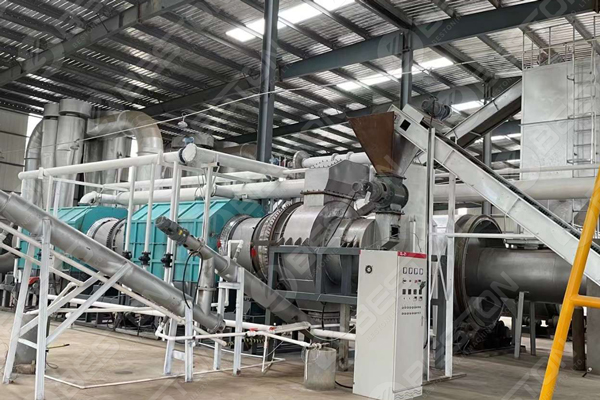
Waste is simply a resource we haven’t figured out how to use yet. This profound statement captures the potential of carbonization, a process redefining the way we perceive waste. Turning raw materials into valuable byproducts is reshaping industries, contributing to environmental preservation, and promoting sustainability. It’s a process that not only manages waste efficiently but also generates new resources to fuel innovation and progress. Let’s know more about it in this guest post.
What Is Carbonisation?
It is a thermal process, which means the organic and inorganic raw materials are heated without oxygen. While combustion releases plenty of pollutants, it involves the production of carbon-rich products like biochar, syngas, and activated carbon. The products are applicable in agriculture, energy production, and industrial applications.
The growing interest arises from its dual benefit of solving the problem of waste management and finding resource-efficient solutions. Through waste conversion into useful products, it reduces reliance on landfills, thereby checking detrimental emissions that can play a key role in conserving the environment.
Why Carbonisation Matters
1. Turning Waste into Resources
It can serve as an easily implementable approach to handle agricultural residue, forestry waste, and municipal solid waste since the by-products created from this material are valued products, which decreases the amount of waste disposed in landfills and reduces environmental threats from waste accumulation.
2. Eco-Friendly Energy Production
The syngas produced is a renewable energy source. This gas can be used to produce electricity or for heating, replacing fossil fuels and thus enhancing energy sustainability.
3. Industrial Applications
Carbonized products such as activated charcoal have large applications in the industry. Activated charcoal is used on large scales in water purification, air purification, and medical treatments.
The Role of Technology in Carbonisation
Improving technology has meant that Carbon Deposition is now better and more efficiently scalable. It is now feasible to use current biochar machines to process both wood chips and various types of municipal waste with minor emissions. All these machines were designed to optimize efficiency, leaving the maximum amounts of raw materials converted into useful byproducts.
Another knowledge-sharing platform is the Biochar Conference 2024. This is fostering innovation in this field by bringing together industry leaders, researchers, and policymakers to discuss the latest advancements, challenges, and best practices in Biomass Conversion. The collaborative efforts at such forums are driving the development of next-generation carbonization technologies.
Benefits of Carbonisation
1. Agricultural Impact
The biochar developed through carbon deposition greatly enhances the health status of the soil. It boosts water retention and nutrient availability in the soil, in addition to enhancing microbial activity.
Biochar enhances agriculture with fewer chemical fertilizers, which fosters sustainable agricultural practices.
2. Environmental Benefits
Biomass Conversion is also able to reduce methane generation from decomposing organic waste within landfills.
It encourages a circular economy since it promotes waste material recycling by reusing it efficiently.
3. Economic Opportunities
It opens a new market for carbonized products such as biochar, activated charcoal, and syngas.
It employs the collection of waste, operation of carbonization plant, and product distribution.
4. Energy Efficiency
The syngas that are produced through Biomass Conversion can power industries or communities, giving an alternative, renewable source of energy rather than using nonrenewable ones.
Applications of Carbonisation
1. Agriculture
Farmers are using biochar more to enhance the quality of their soils and the crops they grow. It holds more water and nutrients, therefore useful in arid areas.
2. Energy Production
The syngas produced in the process can be converted into electricity or used for heating. This cuts the reliance on traditional fossil fuels and aids renewable energy.
3. Industrial Uses
Carbonized materials are used in industries for filtration and adsorption and even as raw materials in manufacturing. Activated charcoal, for example, is crucial for water and air purification systems.
4. Waste Management
Biomass conversion can be adopted by municipalities to manage organic waste efficiently, reduce landfill dependency, and turn waste into resources.
Challenges in Carbonisation
Although It has numerous advantages, there are still some challenges that must be addressed for its universal application:
• High Initial Costs: Setting up carbonized plants or purchasing machines is capital-intensive, and it may be too expensive for small-scale users.
• Awareness and Education: Most communities and industries are not aware of the advantages and applications of biomass conversion, thus limiting its use.
• Regulatory Hurdles: There is a need for standardized policies and guidelines for the safe and effective implementation of carbonization technologies.
Conclusion
Carbonisation is a revolutionary resource and waste management approach. The process converts agricultural residue, forestry byproducts, and municipal waste into valuable materials, thereby addressing some of the most pressing environmental challenges of our time.
Modern technologies like Biochar Production Units and global platforms such as the Biochar Conference pave the way for more efficient and accessible carbonization solutions.
In many respects, benefits from carbonization stretch beyond just the waste management scenario and touch into the realm of agriculture, energy production, and industrial applications; it’s actually a holistic strategy to create a more sustainable future. Using this cutting-edge process will maximize the use of resources while making the earth suitable for the unborn.